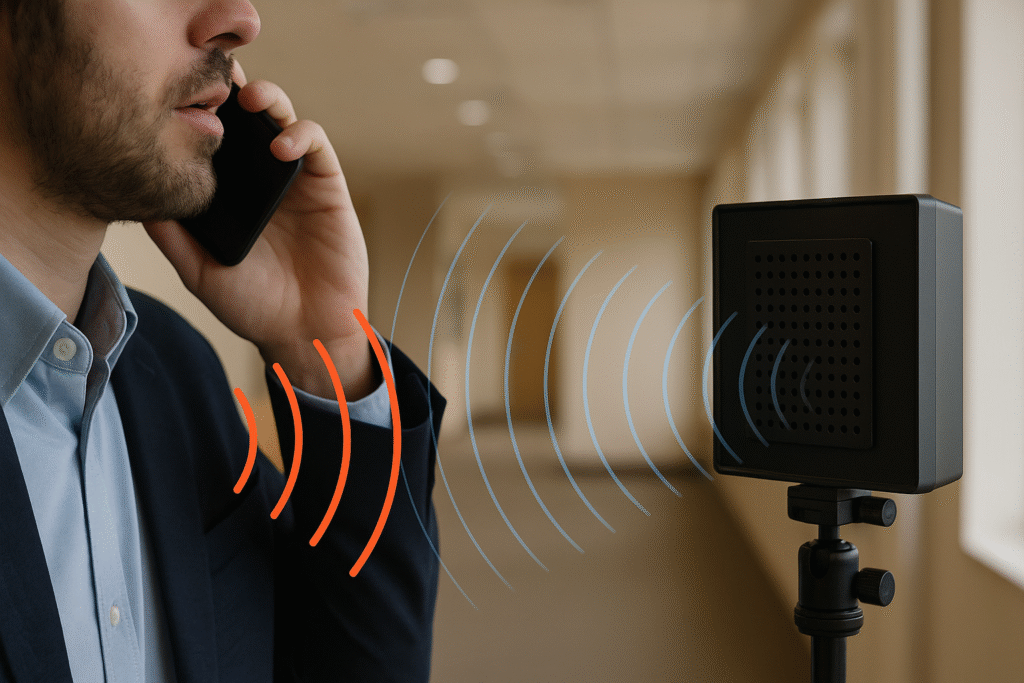Researchers from Penn State demonstrate that it is feasible using radar and AI, posing serious privacy concerns.

What precisely were the findings of Penn State researchers?
By identifying minute vibrations from a phone’s earpiece, researchers at Pennsylvania State University have created a technique that allows them to remotely “listen” to phone conversations. Instead of breaking into the device, they use artificial intelligence (AI) and millimeter-wave radar to reconstruct speech, thereby allowing wireless eavesdropping up to 3 meters (10 feet) away.
What is the accuracy of this approach?
In tests conducted recently, the system’s transcription accuracy for a vocabulary of up to 10,000 words was about 60%. Although it’s far from ideal, experts point out that when paired with context, even incomplete sentences can disclose sensitive information. The new version can handle continuous speech at longer distances than the previous version, which was tested by the same team in 2022 and could only detect 10 specific words at close range.
What is the mechanism of the technology?
- The same kind of radar used in motion sensors, 5G networks, and self-driving cars is called millimeter-wave radar. It recognizes tiny vibrations in the phone’s earpiece that are brought on by the voice of the caller.
- AI Processing: An adapted version of OpenAI’s Whisper model is used to process the radar signals. It is retrained using a low-rank adaptation technique, which changes only 1% of the AI’s parameters, which is sufficient to translate noisy radar data into words.
Does this resemble lip reading?
In theory, yes. The researchers compare it to lip-reading, in which you can still deduce meaning from context even if you only record a portion of the conversation. This technology functions similarly to lip readers, which typically only pick up 30–40% of spoken words but still understand the main idea.
Why does this raise privacy issues?
The concerning aspect is that neither spyware nor physical device access are needed for this—neither a wiretap nor a Pegasus-style infection. You would never be aware that someone with the proper radar equipment was listening in. This increases the possibility of political monitoring, corporate espionage, and invasions of personal privacy.
What are the researchers’ opinions regarding possible abuse?
As the Penn State team emphasizes, their objective is awareness rather than exploitation. By making their findings public, they hope to raise awareness among the public, security professionals, and policymakers so that preventative measures can be created before these kinds of attacks become routine.
Do you know of any defenses against it?
Countermeasures that could be used include
- surrounding earpieces with acoustic shielding.
- Active noise cancellation at millimeter-wave frequencies.
- legal and policy frameworks to control these kinds of surveillance technologies.
In light of their discovery, the researchers think this is an important next step.
Is there the emergence of other comparable systems?
Indeed. As an example:
- With over 80% accuracy, SuperEar records phone earpiece audio at 4.5 meters using acoustic metamaterials.
- Using a similar radar-based technique, Wave-Whisper achieves 44.7% word accuracy at short range.
These developments imply that rather than becoming less possible, radar-assisted eavesdropping is becoming more practical.
Last Lesson
This study demonstrates that software security is no longer sufficient to ensure phone call privacy. Conversations can be leaked through physical vibrations even on devices that are completely encrypted. Today’s real-world misuse may be limited by current accuracy rates, but given the speed at which AI and radar technology are developing, systems of the future may be much more accurate.
“Is it possible?” is no longer the question. “How soon will it be done, and are we ready?” is the question.